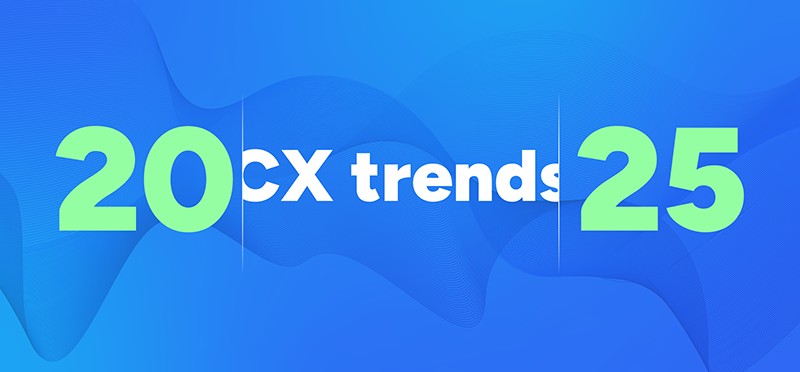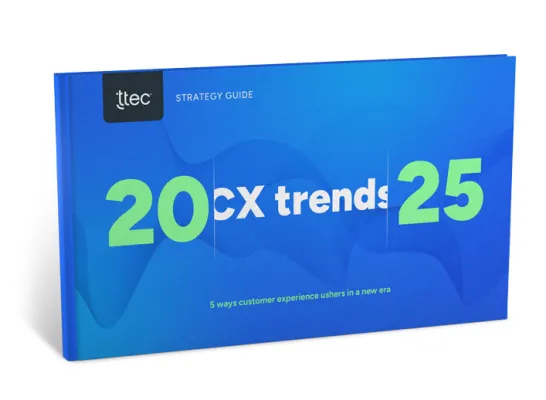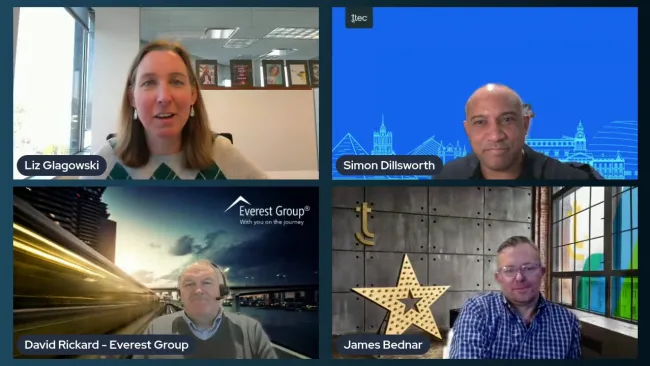All brands are under cost pressures. What’s new about that, right?
Plenty. And the forces exerting these pressures keep changing. Business leaders searching for a relief valve are now considering avenues to cut cost, such as consolidation, that previously were ruled out — off the table. Hard stop. If you are a CX leader, you may feel a little anxious.
Cost pressures can be self-inflicted or come down like a hammer if you never had a say in the matter. If you’re in the U.K., you know that your staffing costs will increase in 2025 thanks to the government’s push to generate £25 billion annually to support public services and economic stability.
Come April, U.K. companies are required to make bigger National Insurance contributions on behalf of their employees — from today’s 13.8% to 15%. What’s more, a larger pool of workers will become eligible for this benefit projected to cost employers £900 per worker. Market watchers say employers may offset the added cost by hiring fewer people, offering lower wages, or reducing planned pay increases in 2025.
Businesses across all of Europe have their own, albeit different, cost pressures to contend with but the common thread of hope is this: Given the CX trends taking shape now and the advancement of tech-enabled tools in the contact centre, there’s more ways to save money whilst at the same time enhance quality of the customer experience. In TTEC’s just-published strategy guide, “CX Trends 2025: 5 ways customer experience ushers in a new era,” we explore the evolving CX landscape, a new workforce that’s emerging, and opportunities to consolidate by stretching into geographies that were off-limits in the past.
A consolidation play to lift CX
Brands are looking at consolidation to deliver customer support and sales across multiple languages. Fragmented teams deployed across various countries are expensive, overhead is duplicated, and consistency is a real challenge.
Rather than having multiple teams based in different countries supporting various languages, why not consolidate your contact centre associates into a hub? If not one central hub, then consider consolidating 10 locations to three strategically selected hubs. Focus more on quality and you can bring in new technologies to help drive the productivity of that team.
When you partner with a BPO that has an expansive global footprint encompassing onshore, nearshore, and offshore delivery, suddenly new opportunities to cut costs become evident.
Let’s say Krakow, Poland, is one of your onshore hubs, and your award-winning team is performing exceptionally, meeting and exceeding goals. Great, but what if you want to scale up with French? Expanding in Poland becomes cost-prohibitive so instead, consider scaling into Rwanda, where there is an abundance of native French speakers who are educated and digitally savvy. Need qualified German speakers? You can establish a hub in Cairo, Egypt, where associates are fluent in German and 10 other languages, possess a strong work ethic, and have low attrition rates.
Supporting multiple languages in one location — or blending onshore with nearshore delivery, for example — offers great cost savings and enables you to focus on quality and consistency.
AI language tools, the ultimate leveler
You can find eager talent and native speakers in regions you may not have entertained in the past, and the emergence of AI-enhanced language tools makes offshore delivery more doable. Just a sampling:
- A healthcare company outsourcing to South Africa reaped immediate savings, improved CSAT, average handle time and productivity, and saw customer audio complaints plummet 78% thanks to the use of an AI-enhanced voice enhancement solution. Not only did this engagement exceed expectations, but it supported the client’s mission to make a positive socioeconomic impact on underserved communities around the world. This Impact Strategy extends far beyond the basic Impact Sourcing (recruitment/hiring) to the more ambitious community-building with local partners, which brings meaningful, lasting impact that remains intact even if the company were to exit the country at some later date.
- Development of real-time language translation is advancing fast. Our partner, Krisp, recently unveiled AI Live Interpreter that supports more than 20 languages. At TTEC, we are developing our own solution that enables two people, each speaking in their own native language, to converse with a natural cadence.
- Accent softening is another flavour of AI-enhanced language tool. TTEC’s accent softening solution dynamically modifies, in real time, associates’ accents to more closely mirror the verbal pronunciation of the customer who’s calling.
- Written correspondence is an important communications channel and here, again, AI comes into play. Our client deployed Grammarly, a cloud-based, AI-enhanced writing tool that helped associates refine their emails to align with European customers’ preferred King’s English, rather than the North American English language they use in their daily lives. Quality scores rose as high as 98.6% as a result.
Let’s agree technology has its limits. AI solutions are most effective when an interaction is binary, such as “book a rental car.” For those more complex, sensitive, and emotionally charged conversations, we’ll always need to inject humanity. We never want to cut people out of the mix. TTEC takes a responsible and pragmatic approach to AI in general, and we can advise clients about limitations and how best to blend humans with technology that helps them perform at their best.
For example, if you are going to deliver Dutch customer support from the Philippines using language translation technology tools, you still need Dutch-speaking employees in the model because sometimes things don’t go to plan and you need that fallback. The point is, you don’t need a large, costly Dutch-speaking team when a cost-effective Filipino team are sufficient.
I’m eager to hear about your hopes and expectations for the new year — and which technologies you are curious about exploring. Best way to establish what can work is to try a short-term pilot programme. The risk is low and the opportunity to establish real KPIs to make a case for investment is high.
For more on how we see trends affecting EMEA organisations, check out TTEC’s just-published strategy guide, “CX Trends 2025: 5 ways customer experience ushers in a new era.” Even better, join us 23 January for our upcoming webinar with Everest, where we’ll unpack these insights. You can register here.














